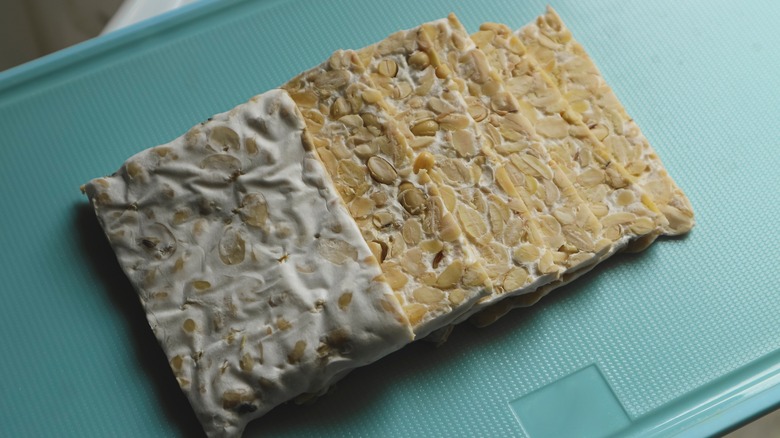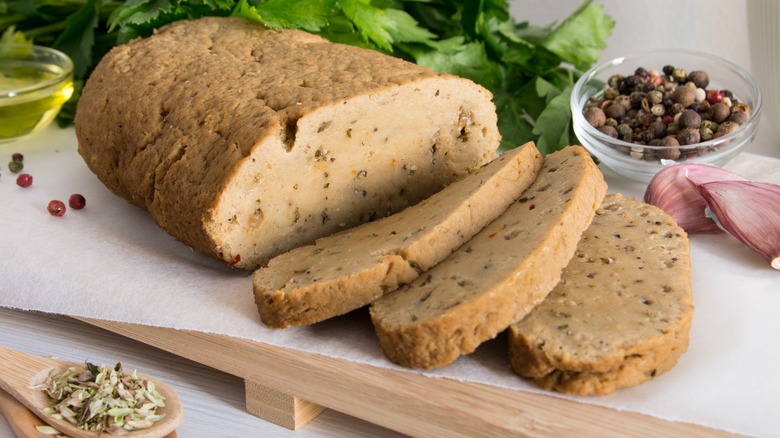Here's The Main Difference Between Tempeh And Seitan
More and more people are eating less and less meat, and there are lots more choices than ever before for vegetarians, vegans, and meat-reducers who want something plant-based but with the texture and high protein content of meat. There are a lot of convincing plant-based meat products worth trying out there, but two of the better-known alternatives — tempeh and seitan — are often confused with one another. The main difference between tempeh and seitan is their point of origin: Tempeh is made from soy, and seitan comes from wheat.
Granted, these two foods are easy to mix up: Both are a little bland on their own, and they can take on the taste of whatever other ingredients they're cooked with. They're also both an inexpensive protein source, minimally processed relative to other non-meats like those peddled by Impossible or Beyond, and boast a nondescript, pale-brown color when sold in a raw state. That's where their similarities end, though.
Tempeh is similar to tofu and is made from soybeans
Tempeh begins with the nutritionally dense and protein-packed soybean. Soy is also the starting spot for the best-known and most generic and versatile of all plant-based meat alternatives, tofu, a food with an ancient history. While tofu is made from soy milk left to coagulate until it turns into a spongy mass, tempeh is produced by treating whole soybeans. They're soaked, boiled, drained, and fermented before being mixed with a fungus, Rhizopus oligosporus. The resulting tempeh is thicker than tofu and offers a consistency approaching that of meat.
On its own, tempeh possesses a nut-like flavor, but it easily absorbs the flavors of the spices and sauces in which it's cooked. While chewy when raw, it firms up upon cooking and lends itself to slices and crumbles. That makes tempeh a good meat substitute, nutritionally and texture-wise, for things like sandwiches and taco filling, respectively.
Seitan is made from wheat gluten
If it's cooked properly, seitan evokes actual meat in texture and thickness while retaining its vegan-safe status. But it differs from other prevalent plant-based faux meats like tofu and tempeh because it isn't made from soybeans but a wheat extract.
Those with celiac disease or any other type of gluten intolerance try to avoid eating foods with wheat because of the gluten — which is the main ingredient in seitan. First, seitan producers remove and separate the gluten from wheat, mix it with water, and add some flavoring agents and preservatives. It's not unlike a loaf of bread, except it's made almost entirely out of gluten, which itself is almost entirely made of protein. Animal meat is also mostly protein, which is a big reason why seitan, so chewy and providing so much give and a savory mouthfeel, works as a replacement for things like chicken.
Tempeh and seitan are both good meat alternative choices. Each has their own foods for which they're better substitutes, which is to be expected since they come from the disparate plants of soy and wheat.


